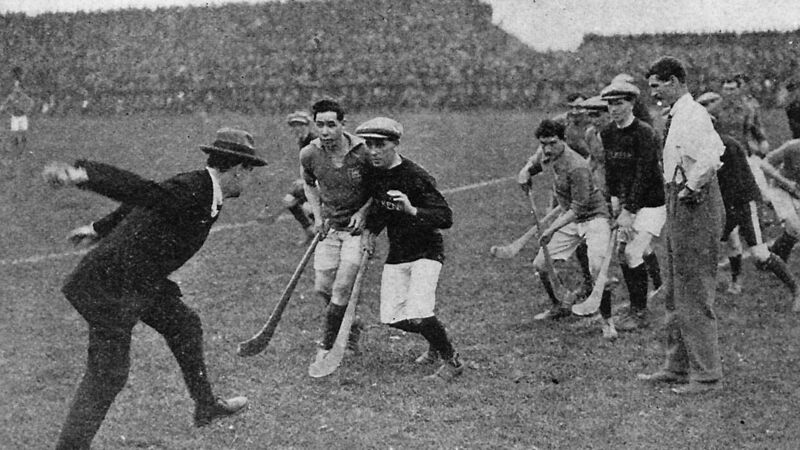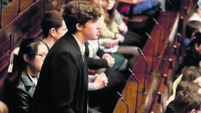100 years on, recognising the GAA’s role at the time of war

Amazing, isn’t it, how often an internal conflict happens amongst populations who have just won or gained freedom from an ancient foe?
Time and time again, we’ve seen examples of how forces, who for years, decades - even generations - faced a common enemy then fell out in a terrible bitter fashion.
I suppose in many cases it comes down to the definition of that ultimate prize, freedom. It can be 100% separation and a slate wiped clean, or maybe the freedom to win ultimate and complete freedom in the future.
It’s just a century since the Irish Civil war ended. Many still say the divisions of that bloody awful time are still to the forefront in Irish life today. Personally, on that score, I’ve me doubts - OK, our two ‘major Political Party’ system can trace its origins to the aftermath of the Irish version of the ‘brother against brother’ feud, but 100 years on we have come a long way.
Recently, a friend of mine was comparing the entrails of the Irish and Spanish Civil Wars. After a civil discourse, we both came to the conclusion that the Emerald Isle has fared much better in the intervening years.
Since 2012, we’ve had the ongoing ‘Decade of Centenaries’ commemorated here in Ireland. True, there have been a few ‘blips’, but overall the events have been respectful and dignified. The cynics might say ‘1916 to 1921 was easy to recall and celebrate’ - a fair point, but even the events of Post Treaty Ireland in 1922 and 1923 haven’t created major divisive or bitter outbursts.
This night week, Thursday, April 13 will see an event take place which will explore the role of the GAA in those seminal years. It’s a part of Irish history that probably hasn’t been delved into deeply enough over the years. That’s surprising because, in reality, the part played by GAA people in Ireland’s struggle for independence was massive.
Similarly, in late 1923, when the fighting between Irishmen and women finally ended, the GAA, the ‘pride of the little parish’ came to the fore once more.
On Sunday, July 2, 1922, Mitchelstown defeated Rathcormac by 4-3 to 2-0 in the Cork Intermediate Hurling Championship - the game was played in Fermoy. The Cork Examiner the next day carried no match report, not even the score, but some ominous headlines;
The Irish Civil War had started. Men and women who had stood shoulder to shoulder for years now fell out badly. A bloody and bitter conflict commenced.
Here in Cork, GAA activities which had been disrupted by the War of Independence were still up in a heap. In August, 1920, the Cork County Board decided not to play any further games and meetings of the Board were cancelled.
The Truce was signed with the British Government in July, 1921, but very few games were played Leeside. A year later, things got even worse when the conflict between the Pro-Treaty and Anti-Treaty factions enveloped the country.
Arthur Griffith and Eoin McNeill both recognised from the start that the Irish Volunteer movement would be greatly enhanced by the inclusion of GAA players. They weren’t ‘anti’ rugby or soccer, but knew full well that the advocates of those games were just interested in playing their chosen sport - end of story.
The GAA, on the other hand, was much more than a sports organisation. In essence, it was a National Movement. Cusack and Davin saw the ‘Irishness’ of Gaelic games as a manifestation of our Gaelic heritage and culture.
Michael Collins, Austin Stack and Harry Boland were GAA members and enthusiastic followers of all things Gaelic. We have all seen old black and white pictures of Irish Volunteers ‘drilling’ using hurley-sticks in place of rifles. Whilst Minister for Finance, Collins twice financially rescued the GAA and ensured that the Jones Road (Croke Park) debt was cleared.
I remember asking an old man here in this parish 40 years ago why the GAA club barely struggled to stay afloat in the early 1920s. “Yerra”, he said, “we had other things on our minds in them years” - I knew what he meant, no further explanation needed!
Last year, the Cork County GAA Board asked a group of history enthusiasts to come together as a sub committee with a brief to make recommendations on how the mark the GAA’s role in Cork in the struggle for Irish freedom. An offshoot of that sub committee’s work was a project undertaken by UCC history lecturer Gabriel Doherty. He has gathered stories and recollections connecting the GAA with the National Movement.
Allied to this information, his own extensive research into the effects of the War of Independence and Civil War on the GAA in Cork will provide the basis for next week’s lecture.
Shortly after the GAA was founded in 1884, it nearly imploded. The infamous ‘Parnell Split’ threatened the very existence of the fledgling Association. Here in Cork, the GAA divided bitterly - three separate ‘County’ Boards existed for a few years - the Official Board as well as the O’Brien and O’Connor Boards.
A similar schism could so easily have happened in 1923. It is to the credit of all involved that, instead of being divisive, the GAA proved to be a fantastic unifying force.
I recently came across details of moves made by the Gaels of Cork, early in 1923, to try and heal the rift in the country. In January that year, a century ago, a special meeting of the GAA’s Central Council was held in Croke Park for the purpose of considering a special motion from Cork advocating that peace should be restored in the country.
The Cork proposal read: “That while not forgetting that the GAA is non-political, the Cork County Board is unanimously of opinion that a move should be made by the Gaelic Athletic Association to secure peace and friendship among brother Gaels, and with this object in view asks the Central Council to summon a National Convention as soon as possible to discuss the best ways and means to secure peace.”
After discussion, a special All -Ireland Convention was proposed for February 4. Things were moving in the right direction at last.
The lecture by Gabriel Doherty on Thursday, April 13, will start at 7.30pm. All are welcome - GAA people, those interested in history, and anyone wanting to learn more about the life and times of the men and women who shaped Cork GAA’s future. The venue is Pairc Ui Chaoimh and there will be plenty parking in close proximity. Bi an gan teip.
“It was a sad state of things that some man or body of men could not be found to end the existing strife and get contending sides to shake hands and be friends. The whole country is drifting to chaos, and it was time that peace should be restored.” ( Report of Cork County Board Meeting, December 1922).







 App?
App?




